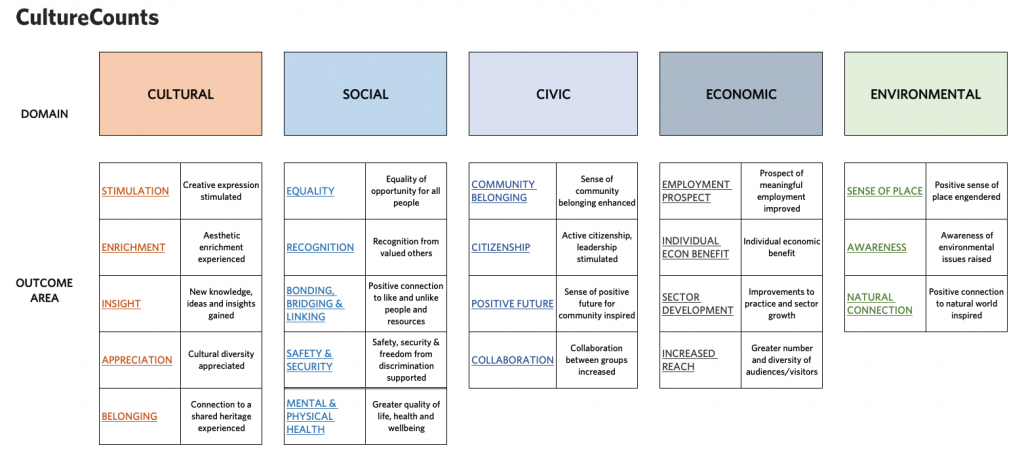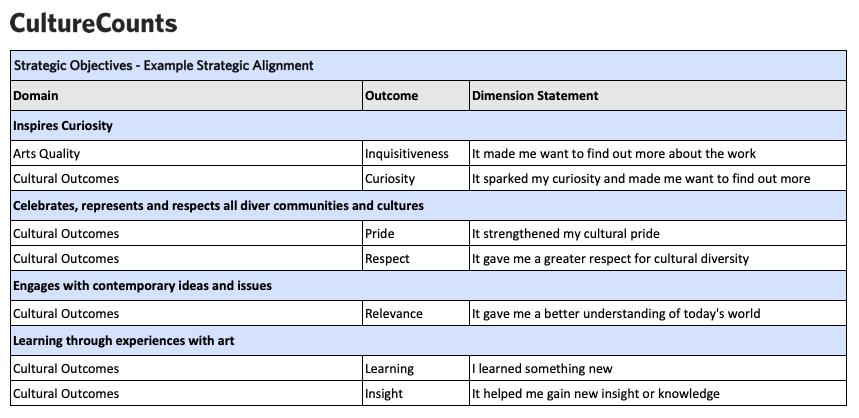A strategic alignment is your best bet at making sure the outcomes you’re measuring in your surveys align to your organisation’s key overall objectives.
If you’re taking some time now to strategically plan for future evaluations, or are looking to effectively measure the impact of your online programming, here is some guidance on where to start.

Thinking about your organisation’s overall outcomes is the first step in the six-step evaluation process and arguably, the most important. If you’ve been previously evaluating according to program-specific outcomes, or haven’t already done so, now may be an opportunity to do some overall strategic work. By identifying a core set of outcomes that relate to your organisation’s overall strategy you’ll ensure that the impact data you’re capturing from your respondents is directly reportable to your organisation’s ‘big picture’ goals. The essence of why your organisation does what it does. The key is to identify what your organisation’s main objectives are and align these to a core set of dimensions to include in your upcoming evaluations.
Identify outcomes from your organisation’s vision and mission statements
This can be done very simply and briefly, by referring to your organisation’s vision and mission statement, or via a more in-depth approach by referencing the actions and outcomes highlighted in your organisation’s strategic plans (e.g. corporate plan, marketing plan, artistic plan, 4-year programming strategy) and drawing out key objectives from there.
More often than not, key objectives are phrased quite openly. Take a look at the mission statements below. These highlight some of the important things that arts and cultural organisations set out to achieve.
- To inspire and strengthen the community, through everything we do — Sydney Opera House
- We provide free and equitable access to cultural and educational experiences. We celebrate ideas, promote creativity, connect people and enrich lives —Madison Public Library
- We create challenging and inspiring theatre creatively controlled by Indigenous artists —Ilbijerri Theatre Company
There’s a diverse mix of objectives represented here; with key-words such as inspiring, challenging, connecting, enriching. But how do you know if you’re achieving these objectives?
Conduct your strategic alignment with an Outcomes Framework
The Outcomes Framework Document is a resource available to all Culture Counts members. It is a document that lists all the dimension statements within the platform, and the relevant outcomes that they relate to. Within this document, the ‘Outcomes Framework’ tab shows you an overview of each of the domains (cultural, social, civic, etc) and break these down into outcome areas (stimulation, enrichment, insight etc). Click on each element to see the dimension statements associated with these outcome areas. A brief preview here:

Connect your outcomes to your strategies
How can you distil all these measurable outcomes to those that are specific to your organisation? Also available is an example Alignment Matrix where we’ve taken the mission and values of a gallery and broken these down into discernible outcomes and aligned dimension statements against these. From here you can use this example to take a look at the goals and vision of your organisation and discern what it is that your programming is trying to achieve, break these goals into measurable chunks and then begin to choose metrics that align with them. A brief example here:

It’s great if you can decide on a core set of 4 or so dimension statements that align strongly with your organisation’s mission and values that you’ll keep consistent over your evaluations for the year. We generally find that you don’t want to include more than 6-8 dimension questions in each survey so having a core set can be very useful, and then you have room to add in program-specific or department-specific dimensions as they come up.
By sticking to a core set of dimensions that relate to your organisation’s overall mission, you’ll not only be able to use these to measure your organisation’s overall impact, but also able to identify how each of your organisation’s online activities or future events and programs contribute to your overall strategy.
Contact your Client Manager for a copy of the Outcomes Framework and example Alignment Matrix. If you’d like to explore options for having a member of the Culture Counts team review your organisation’s strategic documents and prepare a strategic alignment for you, enquire here and a member of our team will be in touch.
If you’d like some guidance on how your Strategic Alignment converts to your survey design, check out our blog on best practice survey design here >







